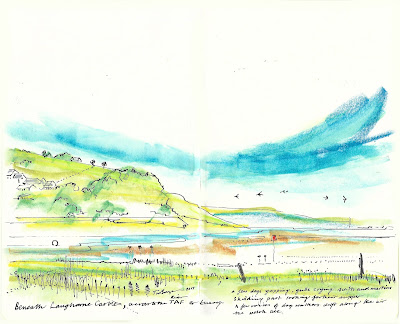3. Clacton-on-Sea
Clacton
has it all; a pier, arcades, a golf course, seagulls that form up as squadrons
to descend on waste bins, caravan parks and even an airfield. The Clacton Air Show,
for which we were too early, takes place in August
Developer
Peter Bruff founded Clacton as a seaside town before he moved up the coast to make
a start on Frinton. Originally the main means of admission to Clacton to was by
sea; steamships operated by the Woolwich Steam Packet Company docked from 1871
at Clacton Pier.
This
is London’s Blackpool
Butlin's first holiday camp opened at Skegness in 1936 was followed by Clacton, two years later. The camp closed on the
outbreak of war in 1939 and was immediately taken over by the Army. It was
intended to use the site for housing prisoners of war and barbed wire and
floodlights soon surrounded the camp, much to the anger of local residents who
feared the lights would attract the enemy.
Clacton’s
camp was sadly closed 1983 when, due our discovery of Spain and British
holidaymakers made a mass exodus to the Costa Brava. At the time Clacton
employed over 900 seasonal staff with a further 67 permanent workers.
However
a buyer was found in the form of a company called Amusement Enterprises, sadly the
new venture only lasted 4 months.
The
place does have an exuberant atmosphere. And if you keep your eyes peeled some
wonderful 1930’s architecture, one instance being the Gentlemen’s Toilets on
the Pier – huge and all tiled and ceramic like the nave of some basilica.
My
good friend photographer and architect conceived
the idea Travels with My Architect.
It was and is a series of seaside jaunts where Trevor with cameras and I, with
Moleskine and pens visit the offbeat parts of the Essex, Suffolk and Kent and
get the place down on paper and film. We
seek out the unusual, outré, and idiosyncratic bits of any place where we end
up.
Our
early travels to Jaywick, Canvey Island, Shotley and Dungeness are published in
the book Curious Coast. You can download the PDF for free right here http://www.timbaynesart.co.uk/free-stuff.html















